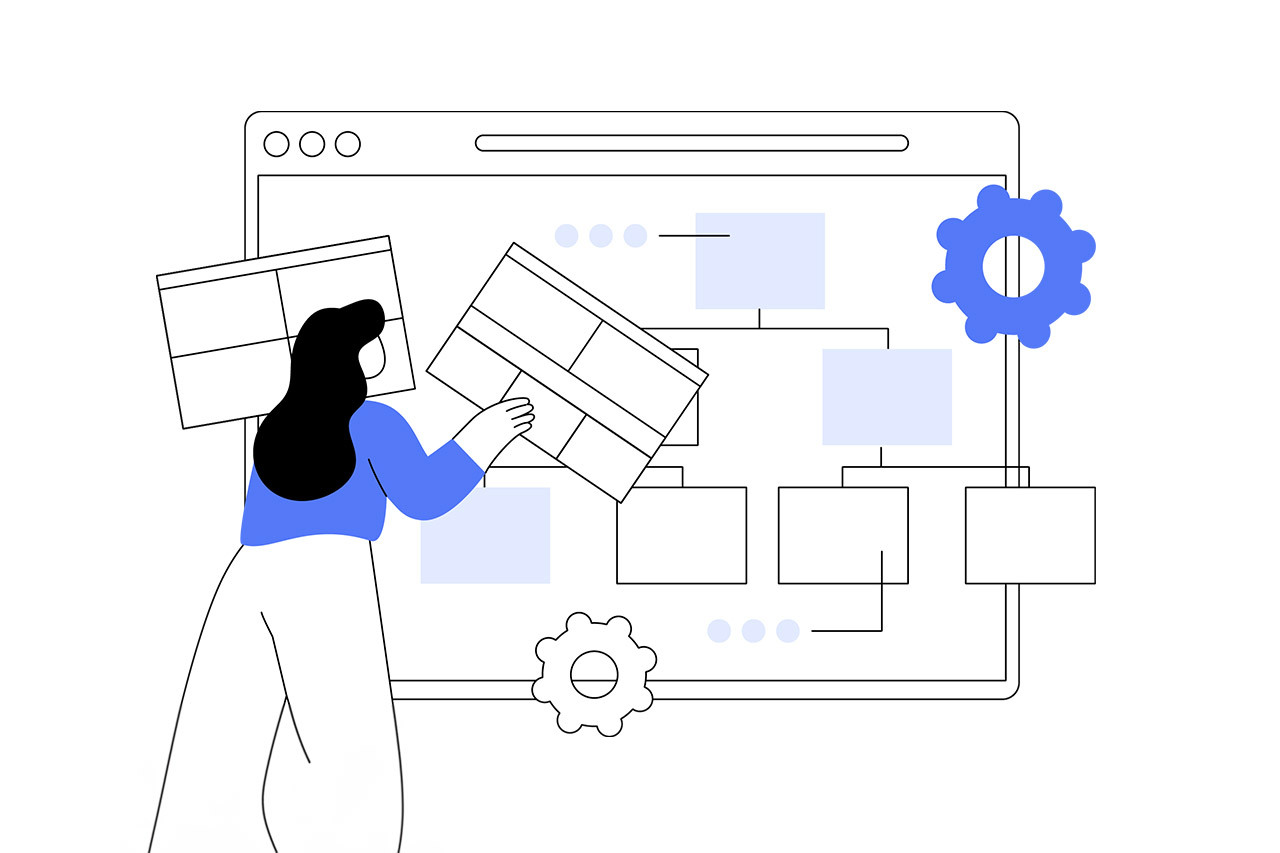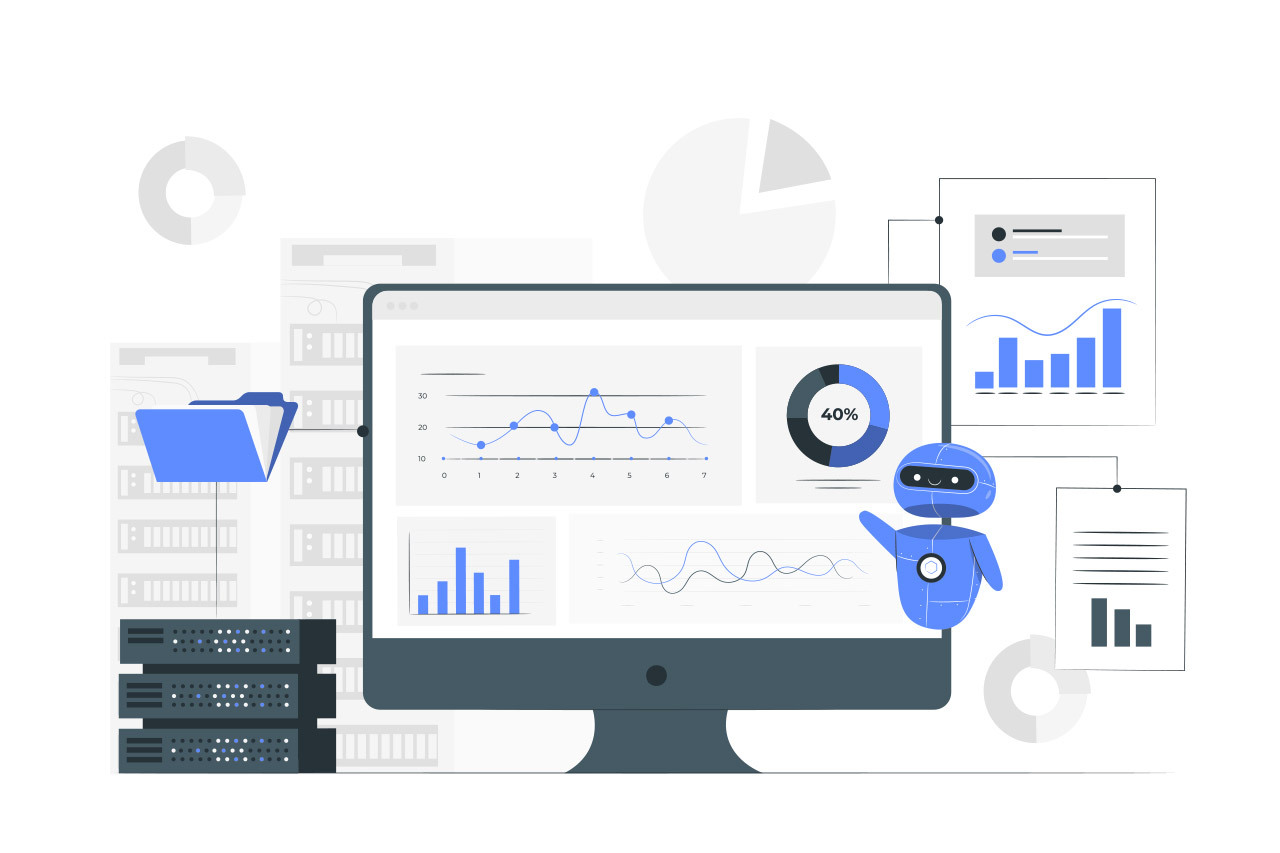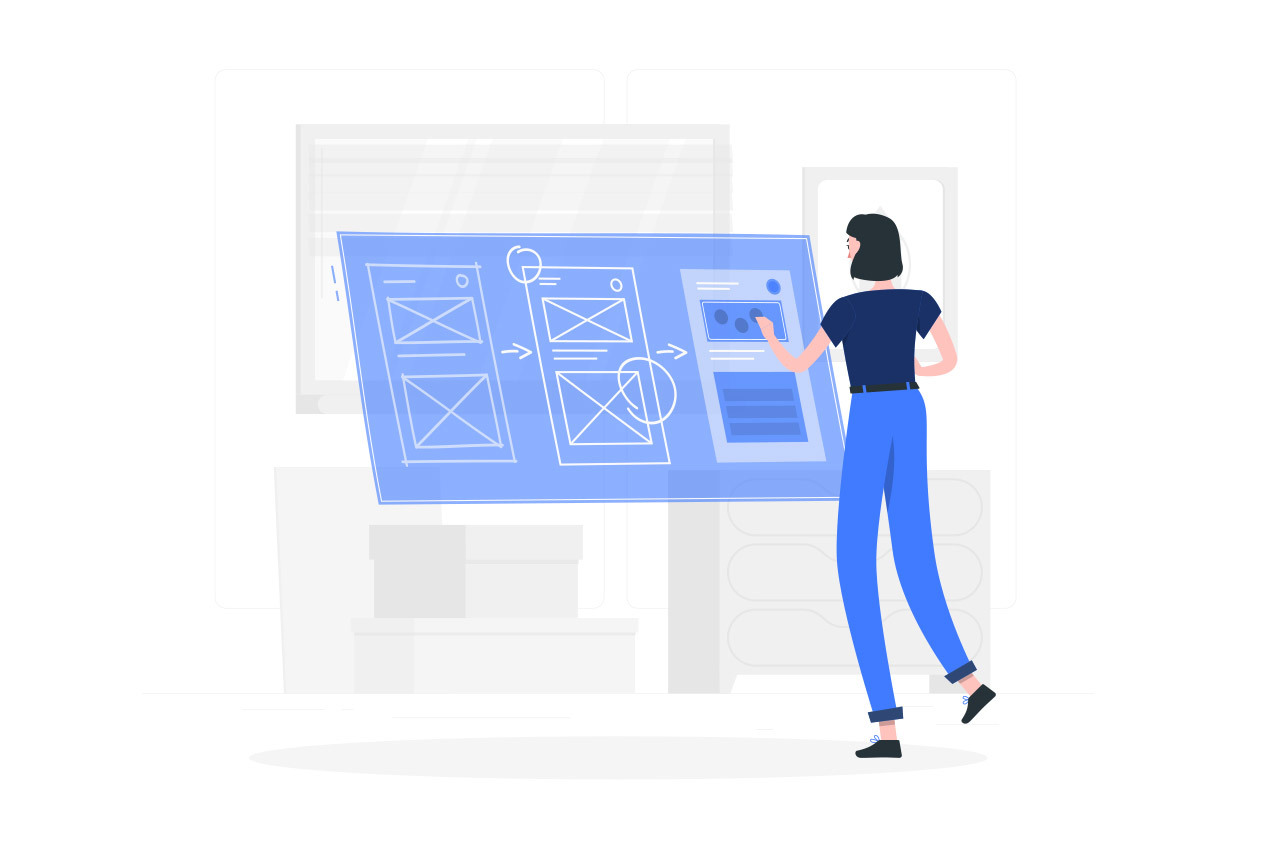If you’d like your company to have the capacity to adjust to changing market conditions quickly and practice a culture of continuous improvement while enjoying all the benefits of using modern tools, you’ll need to keep up with business process management trends.
Adopting newer technologies and methods in BPM will further enhance operations, improve customer satisfaction, and increase profitability. On the other hand, failing to keep up will lead to outdated processes and a decline in overall performance.
So, we examined some trends that are shaping the future of business process management and outlined the most important ones for modern businesses. Read on to learn about them as well as how they impact businesses.
9 Trends Shaping The Future of Business Process Management
- Low-code/no-code BPM Development
- Process Mining and Process Analytics
- Artificial Intelligence and Machine Learning
- Robotic Process Automation (RPA)
- Agile BPM
- Cloud-based BPM Tools
- Human-centric BPM
- Increased Collaboration Functionalities
- Mobile BPM
1. Low-code/No-code BPM Development

Low-code/no-code BPM is already a part of the present and will be even more significant in the future of business process management. Gartner predicts that by 2025, low-code technologies will be responsible for more than 70% of new applications.
A low-code/no-code BPM approach helps you to design, build, and deploy custom applications and workflows for your business with little or no coding knowledge. These BPM platforms provide drag-and-drop interfaces and other user-friendly tools that accelerate the development process and enhance the quality of the applications.
Low-code/no-code BPM development has several benefits. It speeds up application development and helps you to respond swiftly to changing market demands. It also allows for easy app updates without complicated procedures.
Low-code/no-code systems reduce the need for large teams and complex solutions. This relieves IT teams and frees them up to focus on more strategic tasks and initiatives.
With low-code/no-code systems, BPM implementation is simple, accessible, and efficient for everyone involved. Additionally, they promote collaboration, as employees across different departments can contribute to process automation and optimization.
Some BPM tools that already incorporate low-code/no-code features include Pipefy and Kissflow. You can improve operational efficiency, accelerate digital transformation, and drive business agility with low code/no code BPM development.
2. Process Mining and Process Analytics

In response to rapid technological advancements, organizations are adopting intelligence tools like process mining and process analytics to improve their processes. These techniques are essential components of modern business process management strategies.
They help you gain deep insights into your operational processes, identify bottlenecks, optimize workflows, and drive continuous improvement faster.
Process mining uses data mining and machine learning algorithms to extract data from different sources, such as event logs or transactional systems. It analyzes the data to visualize and understand the actual flow of activities within a process.
Process mining techniques can reveal hidden patterns, deviations, and inefficiencies in your process execution. Its goal is to determine how processes actually work as opposed to how they should work.
On the other hand, process analytics focuses on measuring and analyzing KPIs associated with business processes. Performance KPIs, such as efficiency, effectiveness, resource utilization, and compliance, can help you identify non-value-added tasks and activities.
The combination of these two approaches will help you gain a complete understanding of your entire process, from execution to performance evaluation. This helps you to identify areas for improvement and make informed decisions to enhance process performance.
With a BPM tool like Appian, for instance, you can use process mining abilities to find and fix workflow problems and set better standards for your processes.
With process mining and process analytics, you can achieve greater operational efficiency and deliver better customer experiences. These techniques have a promising future as businesses continue to harness their capabilities.
3. Artificial Intelligence and Machine Learning

BPM tools like HubSpot and Creatio, which integrate Artificial Intelligence (AI) and Machine learning (ML) technologies, are driving significant improvements in efficiency, accuracy, and decision making within business processes.
These advanced tools can execute processes with greater accuracy, minimize errors, and improve the quality of outcomes. They can analyze large datasets to uncover patterns and trends that drive process optimization.
One significant application of AI and ML is in predictive analytics. AI and ML algorithms can identify trends, forecast future outcomes, and provide insights for better decision making. This helps you to address potential bottlenecks, optimize resource allocation, and improve process efficiency.
AI and ML technologies can enhance customer experience and engagement within business processes. AI-powered chatbots and virtual assistants can handle customer inquiries, provide personalized recommendations, and assist in problem-solving.
As artificial intelligence and machine learning advance, they will continue to enhance BPM capabilities and drive smarter process execution. To effectively implement AI and ML in your BPM approach, discuss with a BPM consultant who can assess your needs and provide you with tailored solutions.
4. Robotic Process Automation (RPA)

As the demand for efficient and streamlined processes increases, Robotic Process Automation (RPA) will play a vital role in driving automation initiatives.
RPA is helpful for standard procedures with high volumes of repetitive tasks and structured data. It uses robots or “bots.” that mimic human interactions and perform tasks like data entry, data extraction, form filling, and data validation. RPA tools like Automate Plus, Kofax, and UiPath are great for automating repetitive backend processes.
One advantage of RPA is its ability to integrate with existing systems without major changes or disruptions. Also, you can apply RPA to various functions, including finance, customer service, human resources, supply chain management, and more.
Together with artificial intelligence and machine learning, RPA becomes even more powerful in achieving advanced automation capabilities and intelligent decision making. This combination enables the automation of complex tasks that require cognitive abilities, such as natural language processing, image recognition, and sentiment analysis.
Overall, RPA offers significant potential to streamline operations, improve efficiency, and drive digital transformation. It can help you reduce costs and enhance employee productivity, which leads to improved business outcomes.
5. Agile BPM

Traditional business process management (BPM) projects have focused on historical data analysis to understand and document processes accurately. However, organizations are shifting their focus towards real-time monitoring and actual implementation to remain agile and competitive.
Agile BPM, also called Adaptive BPM, is an approach to business process management that emphasizes flexibility, responsiveness, innovation, and continuous improvement. It embraces the principles of agile project management and applies them to BPM processes.
The agile method combines iterative development, collaboration, and quick feedback loops. It breaks down processes into smaller, manageable increments that allow you to detect and resolve issues and test and validate new ideas in a shorter time frame.
With Agile BPM, you can respond quickly to changing market dynamics, customer demands, and internal requirements.
6. Cloud-Based BPM Tools

Cloud-based BPM tools are becoming popular because they have several advantages over traditional on-premises software. Software such as Monday.com and Pipefy are examples of cloud-based tools that use cloud computing to provide flexible, scalable, and cost-effective BPM abilities.
One of the key benefits of cloud-based BPM tools is the ability to access and manage processes from anywhere, at any time. You can conveniently access the BPM platform through a web browser or dedicated mobile application. It makes it easier for your remote teams to collaborate on process management.
Additionally, cloud-based BPM tools are scalable. They help you adjust your resources based on demand. As your business needs change, the cloud infrastructure will accommodate your growing or shrinking workload without requiring extensive hardware or infrastructure upgrades.
Cloud-based BPM tools often come with built-in security measures that protect sensitive data and ensure compliance with industry regulations. The responsibility for data backup, system updates, and maintenance lies with the cloud service provider, and this reduces the burden on your IT team.
Cost savings are another advantage of cloud-based BPM tools. You can avoid the upfront costs associated with purchasing and maintaining on-premises infrastructure. Instead, you can pay for the BPM tool as a service through a subscription-based model.
7. Human-Centric BPM

Organizations are increasingly designing processes with end users in mind to improve employee satisfaction and customer experience. Human-centric or human-centered BPM takes a people-centric approach by focusing on the needs of those who use the processes.
The primary goal of human-centric BPM is to create user-friendly, efficient, and engaging processes. It involves understanding the motivations, challenges, and preferences of the individuals interacting with the process and designing solutions that meet their needs.
This approach goes beyond simply automating tasks and aims to optimize the overall human experience within the process. Human-centric BPM incorporates elements such as user interface design, usability testing, and continuous feedback loops to ensure that processes are intuitive and enjoyable to use.
By involving end-users in the design and improvement of processes, you can tap into their knowledge and expertise. This results in more efficient and effective workflows. It also lets you adapt quickly to changing business needs and customer expectations.
To start implementing human-centered approaches with your BPM system, book a free call with one of our certified BPM consultants to discuss your needs and concerns.
8. Increased Collaboration Functionalities

49% of business executives identified collaboration as their primary benefit of implementing BPM initiatives (AI Multiple). And some BPM solutions have begun to provide advanced collaborative features that enable teams to work together seamlessly.
As remote and hybrid work models increase, the demand for collaborative features in BPM tools will increase.
The expectations for modern BPM tools include features that facilitate process-related alerts, secure document sharing, seamless communication, streamlined issue management, task assignment, and progress tracking, all within the BPM platform.
You can break down barriers, facilitate communication, and improve teamwork with increased collaboration functionalities. It will further drive efficiency and innovation within your processes.
9. Mobile BPM

The increasing maturity of smart mobile devices is leading to their widespread use across different business domains. As a result, business process management (BPM) technologies are incorporating advanced and customizable mobile task support.
Transparency Market Research discovered that the demand for mobile business process management will keep increasing because they benefit both the end users and the global mobile BPM market.
Mobile BPM solutions allow employees to access and manage business processes on the go. They have mobile applications or web-based interfaces that make it possible to view, initiate, and complete tasks related to different processes. This empowers employees to stay connected and productive, even when away from their desks.
BPM tools such as HubSpot and Cretaio now integrate seamlessly with mobile devices and offer intuitive and user-friendly interfaces. They are configurable and adapt to different business processes and user preferences. This flexibility ensures organizations can tailor their BPM solutions to specific operational requirements.
Additionally, mobile BPM solutions enhance customer service by allowing employees to access and update customer information, respond to inquiries, and address issues promptly.
Final Thoughts
The future of business process management looks promising. New trends will emerge and reshape how organizations operate.
As we navigate this transforming period, it’s vital to stay ahead of the curve. That way, your business can thrive and remain competitive.
To optimize your BPM tool, stay in tune with the latest technological advancements, and ensure your organization is well-equipped for the future, schedule a free consultation call with one of our BPM consultants today. We’ll be glad to help.


